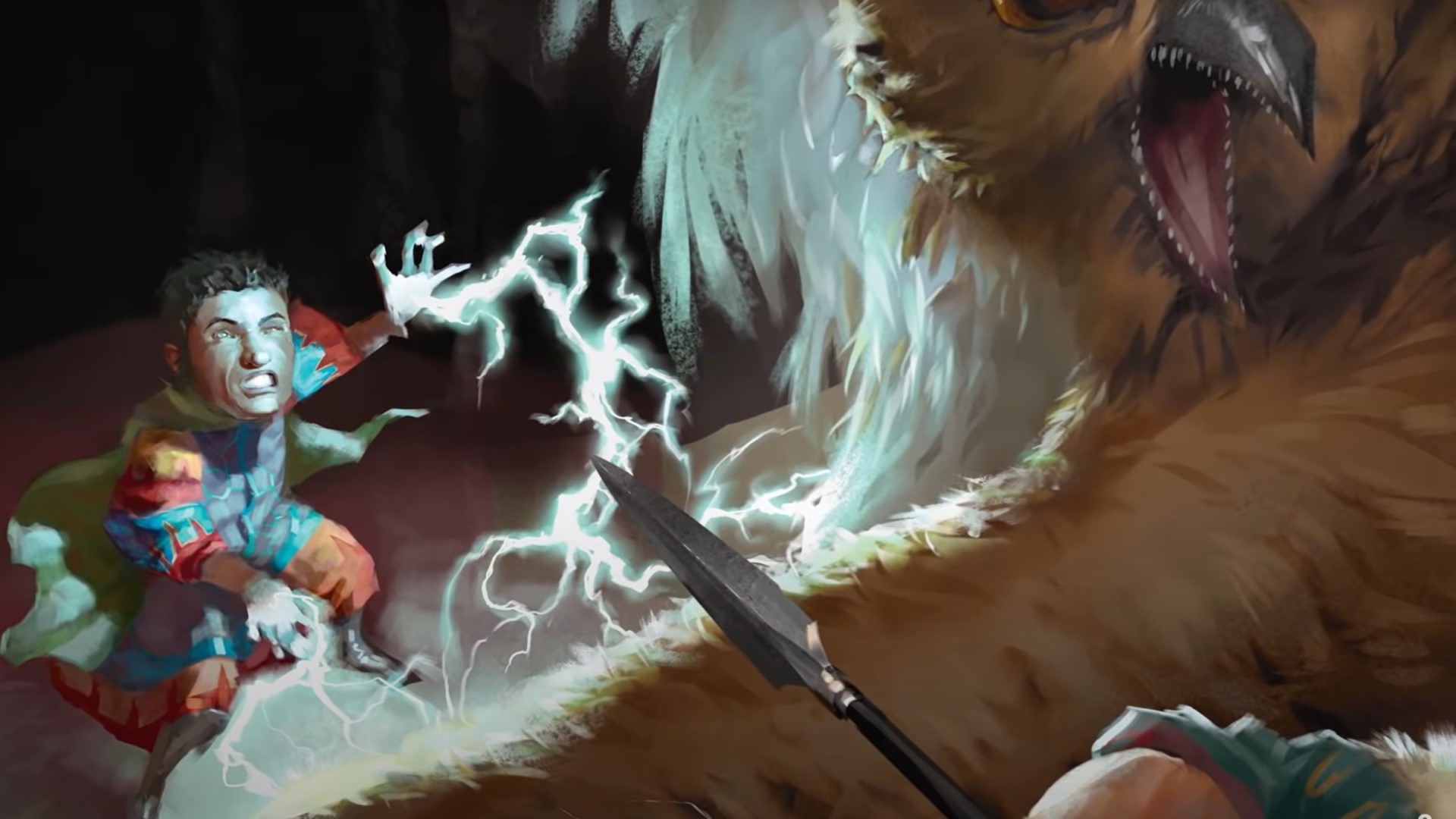The DnD Mind Sliver 5e spell is one of our favourite cantrips of all time. Sure, it may not be the biggest damage dealer, but it’s a true feather in the cap of any cunning TTRPG tactician. Decent hits and the chance to make your enemy trip are nothing to sniff at.
This is one of those 5e spells that’s easy to pick up but needs some brainwork to make the most of. We’re here to make your DnD Mind Sliver experience a great one – below you’ll find out how to cast it, which DnD classes should use it, and how to put it to use in a combat situation.
Here’s our full recap of the DnD Mind Sliver 5e spell:
Mind Sliver 5e features
| Level | Cantrip |
| Casting time | One action |
| Duration | Instantaneous |
| Range / Area | 60ft |
| Attack / Save | Intelligence save |
| School | Enchantment |
How to cast Mind Sliver 5e
This cantrip only requires a verbal component, so you can cast it as soon as you speak of it. Mind Sliver creates, as the Player’s Handbook calls it, a “spike of psychic energy”. This spike is then driven into the mind of a creature within range – ouch.
The target must succeed on an Intelligence saving throw to avoid the painful effects of this cantrip. If they don’t, Mind Sliver deals 1d6 psychic damage and subtracts 1d4 from the next saving throw its victim makes before the end of your next turn.
Who can cast Mind Sliver 5e
Mind Sliver is originally found in the spell lists for Sorcerer 5e, Warlock 5e, and Wizard 5e. Classes who can access these spell lists through subclasses can also pick up the cantrip – so that means the Eldritch Knight Fighter 5e, Arcane Trickster Rogue 5e, and a Blood Hunter 5e in the Order of the Profane Soul also join this list.
The Bard 5e class also gets a chance to learn Mind Sliver. However, they’ll have to wait until level ten (or six, for College of Lore Bards), so this isn’t the ideal class choice if you’re eyeing up Mind Sliver before even deciding which class to play.
Mind Sliver 5e tips
This is one of those spells that scales, so Mind Sliver does more damage as you level up. More specifically, the cantrip does 2d6 damage at level five, 3d6 at level 11, and 4d6 at level 17.
Now, this isn’t a huge amount of damage as far as cantrips go. Anyone looking to take out as many hit points as possible should go back to using Fire Bolt. But Mind Sliver’s saving throw debuff offers a lot of potential. If you can guarantee your enemy will need to roll a saving throw before the end of your turn, you’re setting up a nice advantage.
One way to trigger an immediate saving throw is to cast Mind Sliver on a target who’s concentrating. The damage dealt means they’ll need to pass a Constitution saving throw to maintain that concentration – and with the debuff in place, they’ll have a tough time doing so. It’s a great way to ruin an enemy spell – but bear in mind a spellcasting monster will have a good chance of passing Mind Sliver’s Intelligence saving throw.
Basically, Mind Sliver is at its best when you can cast a second spell (one that has a relevant saving throw to impede) in the same turn. You can easily do this with a bonus action spell or a reaction spell, but there are other options too.
For example, the Sorcerer’s Quickened Spell ability lets them cast any spell that takes one action as if it was a bonus action. This essentially means the Sorcerer can cast two cantrips in their turn – first Mind Sliver, and then something nasty that requires a (now botched) saving throw. Similarly, any character with levels in Fighter can squeeze a second spell into their turn with Action Surge.





